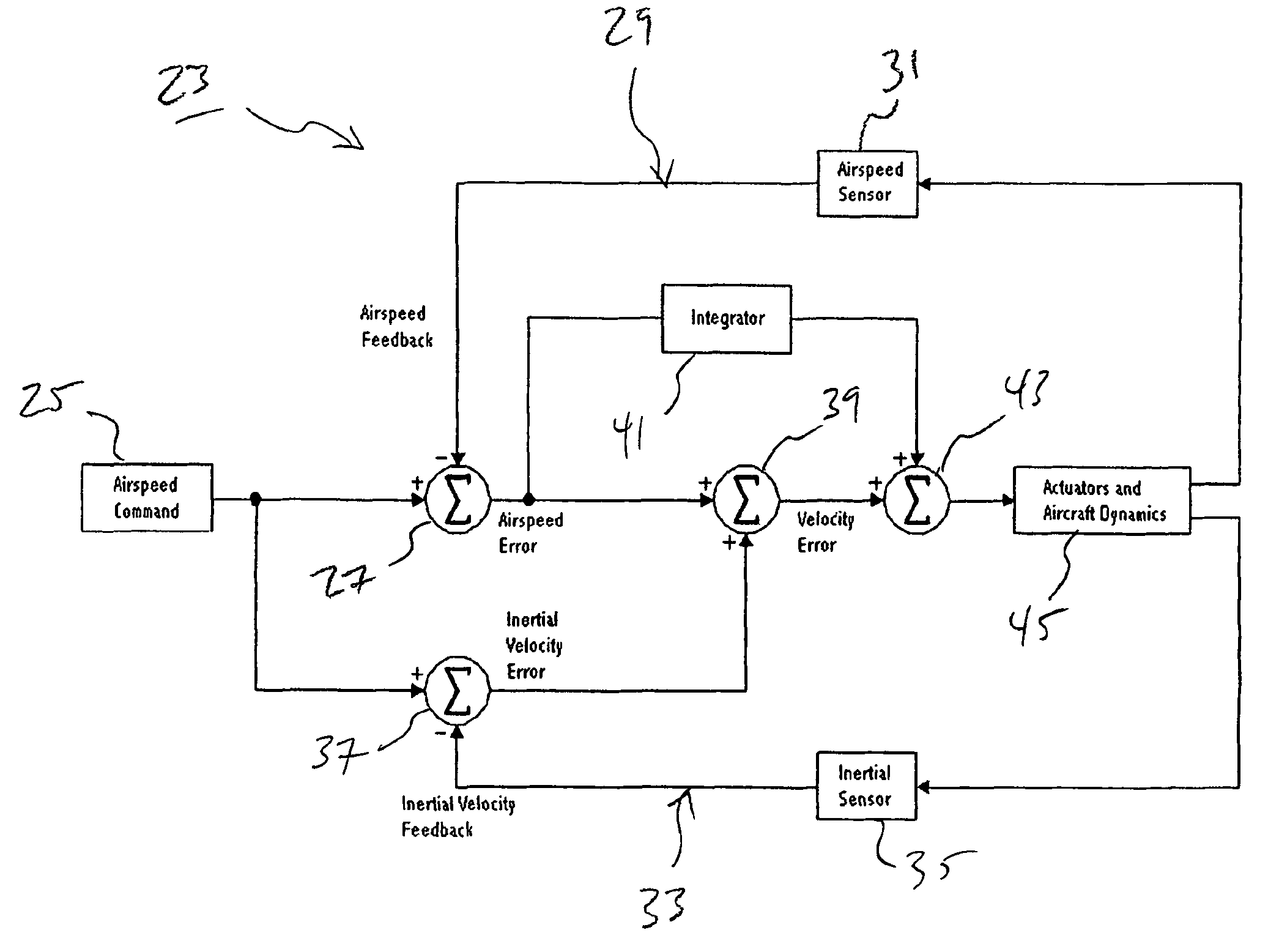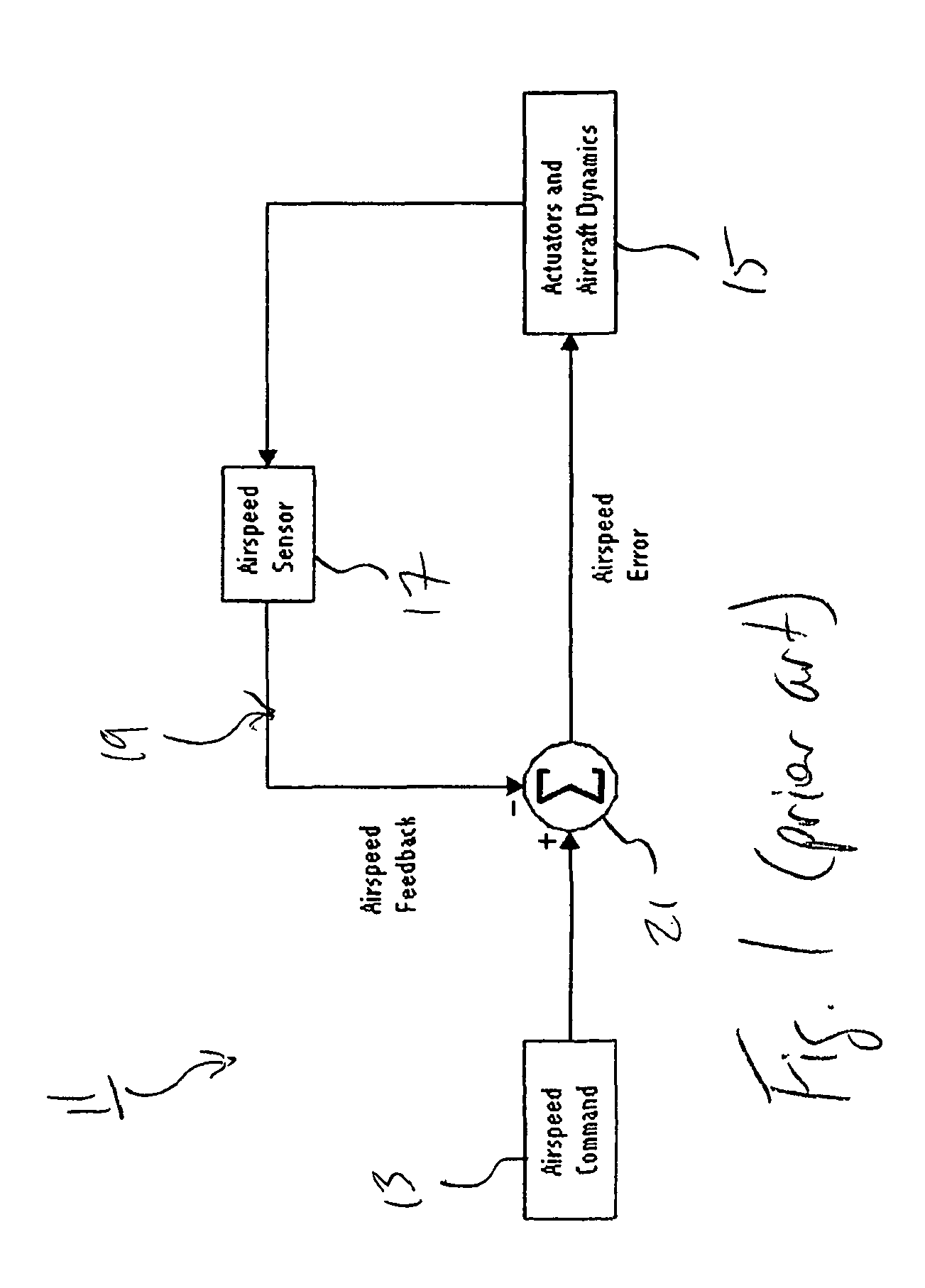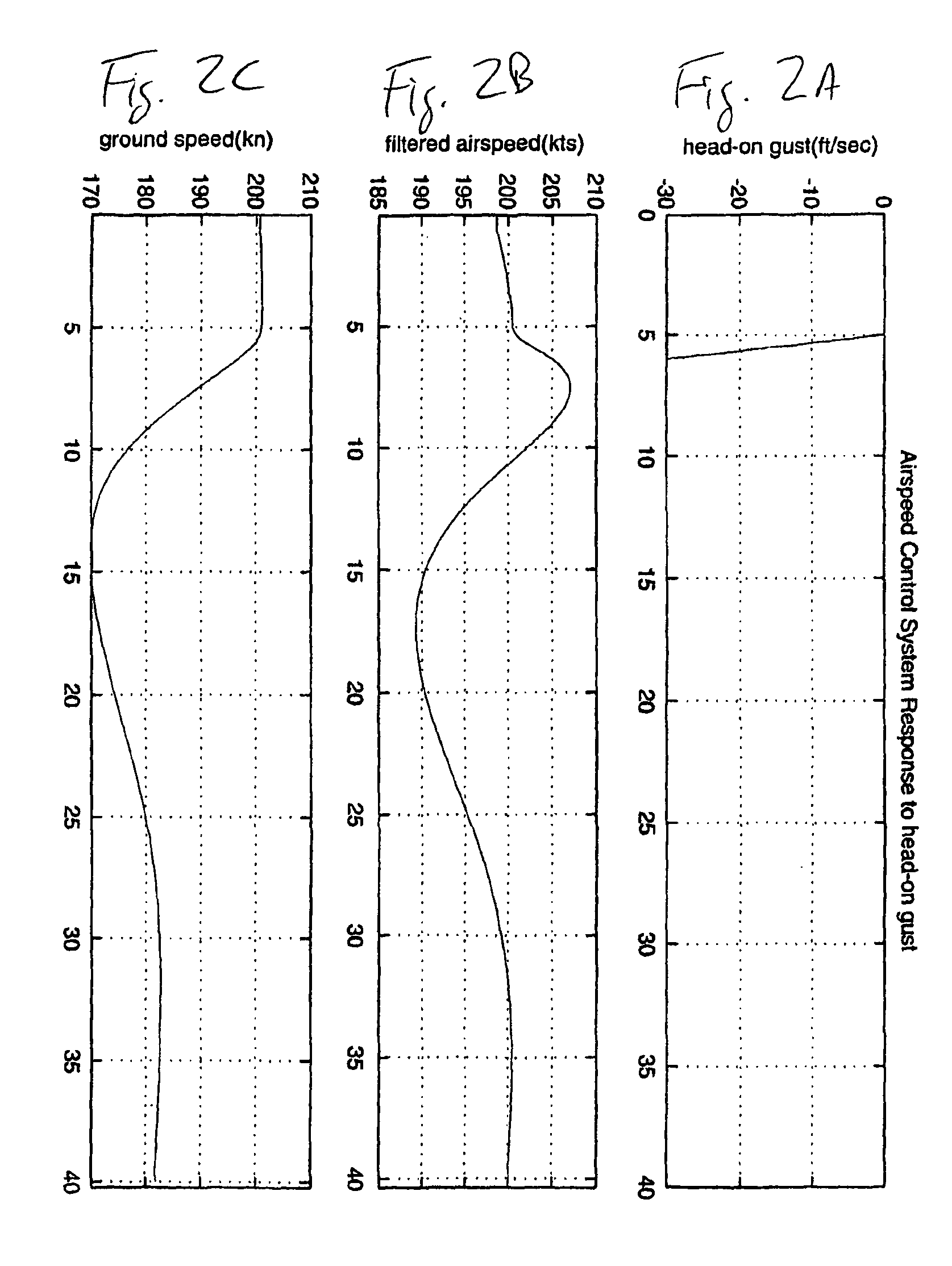Automatic velocity control system for aircraft
a technology of automatic control and aircraft, which is applied in the direction of vehicle position/course/altitude control, process and machine control, instruments, etc., can solve the problems of causing the initial deceleration caused by sustained or transient gusts to worsen, causing undesirable acceleration and motion effects on passengers, and minimizing the undesirable acceleration encountered by passengers. , the effect of minimizing the undesirable acceleration encountered
- Summary
- Abstract
- Description
- Claims
- Application Information
AI Technical Summary
Benefits of technology
Problems solved by technology
Method used
Image
Examples
Embodiment Construction
[0025]The present invention is directed to an airspeed control system configured for automatically controlling the airspeed of an aircraft and reducing the longitudinal accelerations due to air turbulence encountered during flight. When a wind gust having a longitudinal component is detected, the system of the invention uses the combination of an airspeed signal and an inertial velocity (longitudinal ground speed) signal as the velocity feedback signal for the control system. In calm air, the steady-state airspeed and inertial velocity are the same value.
[0026]Referring to the figures, FIG. 4 shows a schematic view of a preferred embodiment of the control system of the invention in which a selected airspeed is commanded by the operator or pilot. System 23 is a closed-loop feedback system that uses both airspeed and inertial velocity (ground speed) to determine the appropriate throttle response to changes in airspeed. In the system shown, a selected airspeed signal is output from a c...
PUM
 Login to View More
Login to View More Abstract
Description
Claims
Application Information
 Login to View More
Login to View More - R&D
- Intellectual Property
- Life Sciences
- Materials
- Tech Scout
- Unparalleled Data Quality
- Higher Quality Content
- 60% Fewer Hallucinations
Browse by: Latest US Patents, China's latest patents, Technical Efficacy Thesaurus, Application Domain, Technology Topic, Popular Technical Reports.
© 2025 PatSnap. All rights reserved.Legal|Privacy policy|Modern Slavery Act Transparency Statement|Sitemap|About US| Contact US: help@patsnap.com



